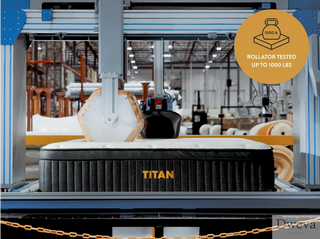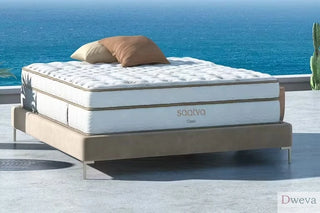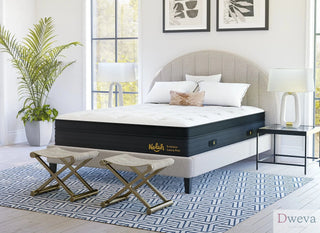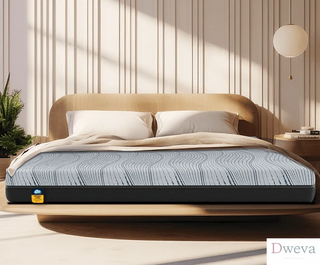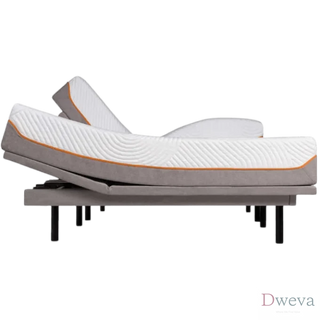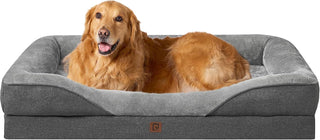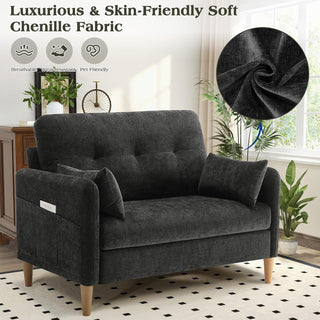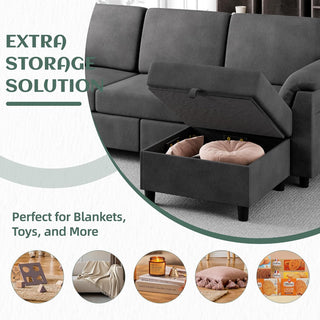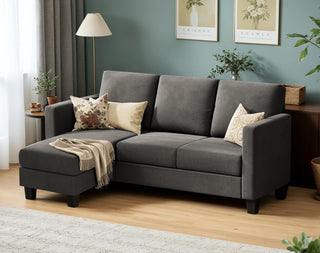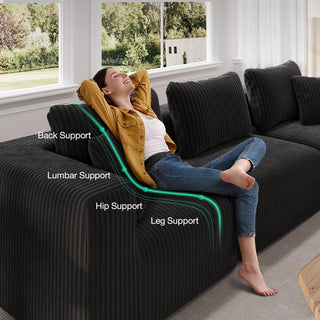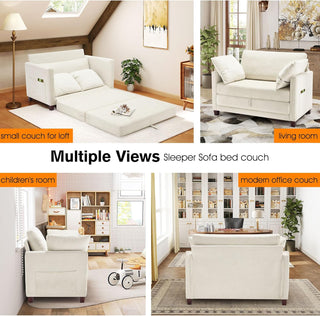Let’s be real—mattress shopping can feel like an overwhelming task. There are so many options out there, and choosing the right one can be stressful. It's not like you can just close your eyes, throw a dart, and pick a mattress for the next decade, right?
That said, one great starting point is deciding which type of mattress suits you best. The two most popular options are innerspring mattresses and memory foam mattresses. To help guide the decision-making process for all the confused mattress shoppers out there, we’re going to pit these two against each other in an epic showdown. Cue the “Eye of the Tiger”—let’s dive in!
- 1. What Is an Innerspring Mattress?
- 2. What Is a Memory Foam Mattress?
- 3. What Are the Main Differences Between Innerspring and Memory Foam Mattresses?
- 4. Benefits & Drawbacks of Innerspring Mattresses
- 5. Benefits & Drawbacks of Memory Foam Mattresses
- 6. Who Should Get an Innerspring Mattress?
- 7. Who Should Get a Memory Foam Mattress?
- 8. Overall
What Is an Innerspring Mattress?
First, let’s define what we mean by innerspring mattresses. These are the oldest type of mattresses, dating all the way back to 1871. If you think about it, even figures like Jesse James, Theodore Roosevelt, and Steve McQueen might have slept on one!
An innerspring mattress contains coils that serve as the main support system. There are several different types of coils used in these mattresses:
- Open Coils: This is the classic design, where the coils are interconnected by a wireframe.
- Pocketed Coils: These coils are wrapped in fabric and provide better contouring, improving support.
- Offset Coils: Shaped like an hourglass, these coils also offer excellent contouring.
- Continuous Coils: Made from a single piece of wire, this system creates the entire coil structure.
Most innerspring mattresses are topped with some kind of foam, fabric, or upholstery. If the comfort layer exceeds 2 inches, you’re looking at a hybrid mattress.
What Is a Memory Foam Mattress?
Memory foam is a newer material compared to innerspring, originally created by NASA in 1966. Its official name is viscoelastic polyurethane foam, but it’s commonly known as memory foam.
Memory foam was first designed to protect astronauts from the intense G-force during space missions. Today, it’s used to offer pressure relief for people sleeping on it. The material is known for its soft, slow-reacting feel. When you lie down on a memory foam mattress, it doesn’t immediately sink in. Instead, the foam slowly conforms to your body.
Not all memory foam is created equal, though. Some foams are more slow-reacting, while others respond more quickly. Additionally, the density of the foam plays a significant role in its durability. Higher-density memory foam mattresses typically last longer than lower-density ones.
What Are the Main Differences Between Innerspring and Memory Foam Mattresses?
When it comes to construction, innerspring mattresses and memory foam mattresses have significant differences. The feel of each mattress is notably distinct:
- Innerspring mattresses tend to have more bounce, and you sleep on top of the mattress instead of sinking in. Movement is easy, and they allow for more air circulation, making them more breathable than memory foam mattresses.
- Memory foam mattresses have little to no bounce and allow you to sink into the mattress. Sleeping on one feels more like being enveloped by the foam.
Another key difference is that innerspring mattresses tend to be cooler. Since the coils allow air to circulate, they promote better temperature regulation. Memory foam, on the other hand, is known for retaining heat, which can make sleeping on them feel warmer.
Benefits & Drawbacks of Innerspring Mattresses
Let’s dive into the pros and cons of innerspring mattresses:
Benefits
- Breathability: The coils in innerspring mattresses allow for excellent air circulation, which helps regulate body temperature and makes them a good choice for hot sleepers.
- Support: The coils provide solid support, especially if they are high-grade. Innerspring mattresses can handle a lot of weight, making them a good option for heavier sleepers.
- Firmness: Innerspring mattresses are typically firmer, which is preferred by stomach sleepers and those needing extra support.
Drawbacks
- Motion Transfer: Innerspring mattresses tend to transfer motion, so if your partner moves during the night, you’ll likely feel it.
- Noise: Over time, the coils can start to make creaking or squeaking noises, especially in older mattresses.
- Pressure Relief: They don’t offer the same level of pressure relief as memory foam, making them less ideal for side sleepers who need extra cushioning for their hips and shoulders.
Benefits & Drawbacks of Memory Foam Mattresses
Now let’s look at the pros and cons of memory foam mattresses:
Benefits
- Pressure Relief: Memory foam excels at pressure relief. It conforms to your body, relieving pressure on heavier areas like the hips, shoulders, and lower back.
- Contouring: The material molds to your body’s shape, offering a supportive “hug” that’s especially comforting for side sleepers.
- Motion Isolation: Memory foam is great at isolating motion, so if you sleep with a partner, their movements are less likely to disturb you.
- Quiet: Memory foam mattresses are virtually silent when you move, so there’s no annoying squeaking.
Drawbacks
- Temperature Regulation: Memory foam tends to trap body heat, making it uncomfortable for hot sleepers. Many manufacturers now add cooling infusions to counteract this, but it’s still a common issue.
- Movement: Since memory foam allows you to sink into the mattress, it can be harder to move around and switch positions during the night.
- Off-Gassing: Memory foam mattresses often have a strong chemical smell when first unboxed, which is known as off-gassing. This can take a few days to dissipate.
- Sagging: Over time, lower-density memory foam may develop body indentations, causing the mattress to lose its supportive properties.
Who Should Get an Innerspring Mattress?
Innerspring mattresses are a great choice for:
- Those who like to sleep on top of the mattress rather than sinking into it.
- Combination sleepers who need a responsive surface to easily move around on during the night.
- Hot sleepers, as innerspring mattresses are more breathable and help regulate body temperature.
- Heavier sleepers or stomach sleepers who require extra support.
Who Should Get a Memory Foam Mattress?
Memory foam mattresses are ideal for:
- Side sleepers who need extra pressure relief on their shoulders and hips.
- People with pain issues, as the mattress provides excellent pressure relief for sore joints and muscles.
- Couples looking for better motion isolation to avoid disturbing each other during the night.
- Those who enjoy sinking into their mattress and prefer that hugging sensation.
Overall
At the end of the day, the decision between an innerspring or memory foam mattress comes down to personal preference and sleeping habits. Consider your sleeping position, temperature preferences, and whether you prioritize motion isolation or support when making your decision.
Both types have their pros and cons, but knowing what matters most to you will make the mattress buying process much easier.



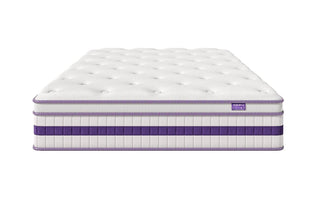
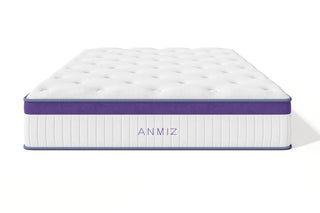
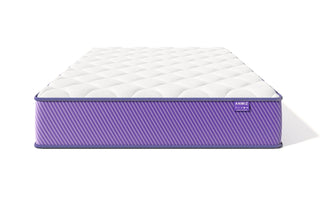

 https://dweva.com
https://dweva.com




